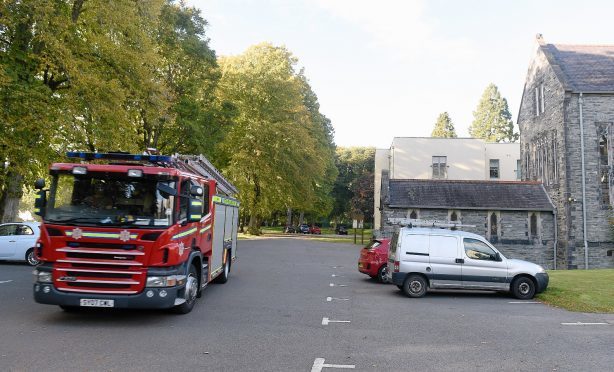Permission has been granted for repairs to a former Highland church partly damaged by fire.
A sauna within the former St Benedict’s Abbey was damaged by a blaze in October last year.
The grand building is now used as luxury accomodation, including upmarket leisure facilities.
An area known as the Chapel Pool Complex was damaged by the fire.
Planning permission was needed to carry out repairs because of the building’s A-listed status.
Interior stonework had been badly blackened by the fire – while 24 window panes were cracked beyond repair.
The damage was described as “extensive” by council planners.
A primary concern was finding a way of cleaning the fire-affected areas without causing further damage to the historic stonework.
After several trials it was decided to make use of a process known as “soda blasting”.
This involves using compressed air to blast bicarbonate of soda at the damaged area to removed soot and smoke damage.
Historic Environment Scotland had hoped that a non-abrasive method could be found – but council planners granted permission for the cleaning scheme.
Highland Council planning officer Norman Brockie said: “Given the lack of observable damage to the surface of the stone and the significant visual improvement of the finish it is the view of the planning authority that, subject to conditions, this method can be approved.”
Conditions include that the soda blasting will be carried out at a pressure of at most 80psi.
Any deep-seated damage, such as the fire where the fire was fiercest, that can’t be removed using this method is to be left in-situ.
The broken windows will be replaced by glass and fixings to match the originals.
In October firefighters spent almost five hours working at the abbey after the fire broke out.
The abbey was formerly used as a monastery and school by Benedictine monks.
It was built on the site of a former fort which was erected to aid of the suppression of the Jacobite cause.
It operated as a school until 1993 and the monks left in 1998 after an attempt to use parts of the abbey as a tourist attraction failed to generate sufficient income.










